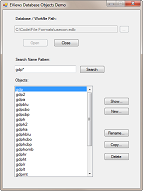EXTENSIVE FUNCTION LIBRARY
EViews includes an extensive library of functions for working with data. In addition to standard mathematical and trigonometric functions, EViews provides functions for descriptive statistics, cumulative and moving statistics, by-group statistics, special functions, specialized date and time series operations, workfile, value map, and financial calculations.
EViews also provides random number generators (Knuth, L’Ecuyer or Mersenne-Twister), density functions and cumulative distribution functions for eighteen different distributions.These may be used in generating new series, or in calculating scalar and matrix expressions.
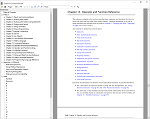
SOPHISTICATED EXPRESSION HANDLING
EViews’ powerful tools for expression handling mean that you can use expressions virtually anywhere you would use a series. You don’t have to create new variables to work with the logarithm of Y, the moving average of W, or the ratio of X to Y (or any other valid expression). Instead, you can use the expression in computing descriptive statistics, as part of an equation or model specification, or in constructing graphs.
When you forecast using an equation with an expression for the dependent variable, EViews will (if possible) allow you to forecast the underlying dependent variable and will adjust the estimated confidence interval accordingly. For example, if the dependent variable is specified as LOG(G), you can elect to forecast either the log or the level of G, and to compute the appropriate, possibly asymmetric, confidence interval.
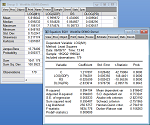
LINKS, FORMULAS AND VALUES MAPS
Link objects allow you to create series that link to data contained in other workfiles or workfile pages. Links allow you to combine data at different frequencies, or match merge in data from a summary page into an individual page such that the data is dynamically updated whenever the underlying data change. Similarly, within a workfile, formulas can be assigned to data series so that the data series are automatically recalculated whenever the underlying data is modified.
Value labels (e.g., “High”, “Med”, “Low”, corresponding to 2, 1, 0) may be applied to numeric or alpha series so that categorical data can be displayed with meaningful labels. Built-in functions allow you to work with either the underlying or the mapped values when performing calculations.
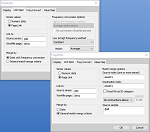
DATA STRUCTURES AND TYPES
EViews can handle complex data structures, including regular and irregular dated data, cross-section data with observation identifiers, and dated and undated panel data.
In addition to numerical data, an EViews workfile can also contain alphanumeric (character string) data, and series containing dates, all of which may be manipulated using an extensive library of functions.
EViews also provides a wide range of tools for working with datasets (workfiles), data including the ability to combine series by complex match merge criteria and workfile procedures for changing the structure of your data: join, append, subset, resize, sort, and reshape (stack and unstack).
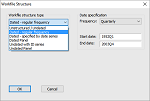
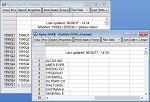
FILE IMPORT AND EXPORT
Exchanging data with other programs is easy, since EViews reads and writes over 20 popular data formats (including Excel, formatted and unformatted ASCII/Text, R data, SPSS, SAS (transport), Stata, SPSS, HTML, Microsoft Access, Gauss Dataset, and more). Simply drag-and-drop your foreign file onto EViews and your data will automatically appear in an EViews workfile. Or use the easy-to-use dialogs and wizards to cutomize the importing of your data.

FREQUENCY CONVERSION
When you import data from a database or from another workfile or workfile page, it is automatically converted to the frequency of your current project.
EViews offers many options for frequency conversion, and includes support for the conversion of daily, weekly, or irregular-frequency data. Series may be assigned a preferred conversion method, allowing you to use different methods for different series without having to specify the conversion method every time a series is accessed.
© 2025 S&P Global
You can even create links so that the frequency converted data series are automatically recalculated whenever the underlying data is modified.
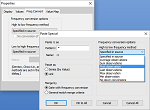
EVIEWS DATABASES
EViews provides sophisticated built-in database features. An EViews database is a collection of EViews objects maintained in a single file on disk. It need not be loaded into memory in order to access an object inside it, and the objects in the database are not restricted to being of a single frequency or range. EViews databases offer powerful query features which can be used to search through the database for a particular series or select a set of series with a common property.
Series contained in EViews databases may be copied (fetched) into a workfile, or they may be accessed and used by EViews procedures without being fetched into workfiles. In both cases, EViews will automatically perform frequency conversion if necessary. Automatic search capabilities allow you to specify a list of databases to be searched when a series you need cannot be found in the current workfile.
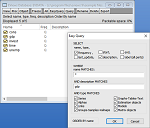

ONLINE DATABASES
EViews can connect to a multitude of online databases providing economic and social data which can be brought into EViews with a few clicks of the mouse.
EViews provides access to The IMF, United Nations, World Bank, OECD, World Health Organization, DBnomics, Eurostat, ECB, Fred, US BLS, US BEA, US Census, US NOAA, German Bundesbank, Australian ABS, France’s INSEE, and more!
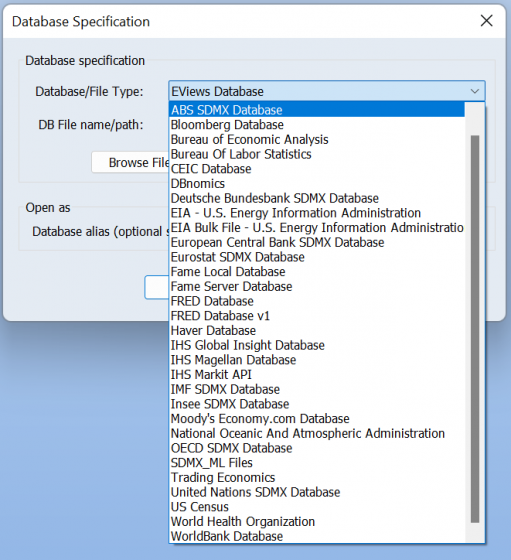
ODBC COMPLIANT DATABASES
Enterprise Edition allows direct access to any database with an ODBC driver, providing transparent connection to common relational databases such as Oracle, Microsoft SQL Server, IBM DB2, or Sybase.
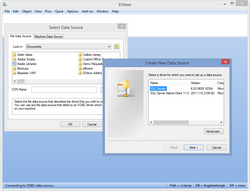
EVIEWS DATABASE EXTENSION INTERFACE (EDX)
The EDX API provides an open programming interface that allows users to develop their own customized connection to any public or proprietary data source providing simple and immediate access to the data within EViews.
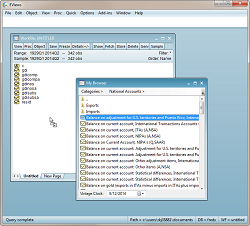
EVIEWS DATABASE OBJECTS LIBRARY (EDO)
The EDO library allows you to work with data stored in EViews file formats from within other applications. EDO makes it simple to pull the finished results of your work directly from your EViews workfile, or to write a simple application to regularly update your EViews database from an external data source.
